Abstract
Blue light induces a long-term suppression of epicotyl elongation in red-light-grown pea (Pisum sativum L.) seedlings. The fluence-response characteristics are bell-shaped, indicating the possibility of two different blue-light responses: a lower fluence response causing suppression and a higher fluence response alleviating the suppression. To determine if two responses are in effect, we have grown pea seedlings under dark conditions hoping to eliminate one or the other response. Under these growth conditions, only the lower fluence portion of the response (suppression of elongation) is apparent. The kinetics of suppression are similar to those observed for the lower fluence response of red-light-grown seedlings. The response to blue light in the dark-grown seedlings is not due to the excitation of phytochrome because a pulse of far-red light large enough to negate phytochrome-induced suppression has no effect on the blue-light-induced suppression. Furthermore, treatment of the dark-grown seedlings with red light immediately prior to treatment with high fluence blue light does not elicit the higher fluence response, indicating that the role of red light in the blue high fluence response is to allow the plant to achieve a specific developmental state in which it is competent to respond to the higher fluences of blue light.
Full text
PDF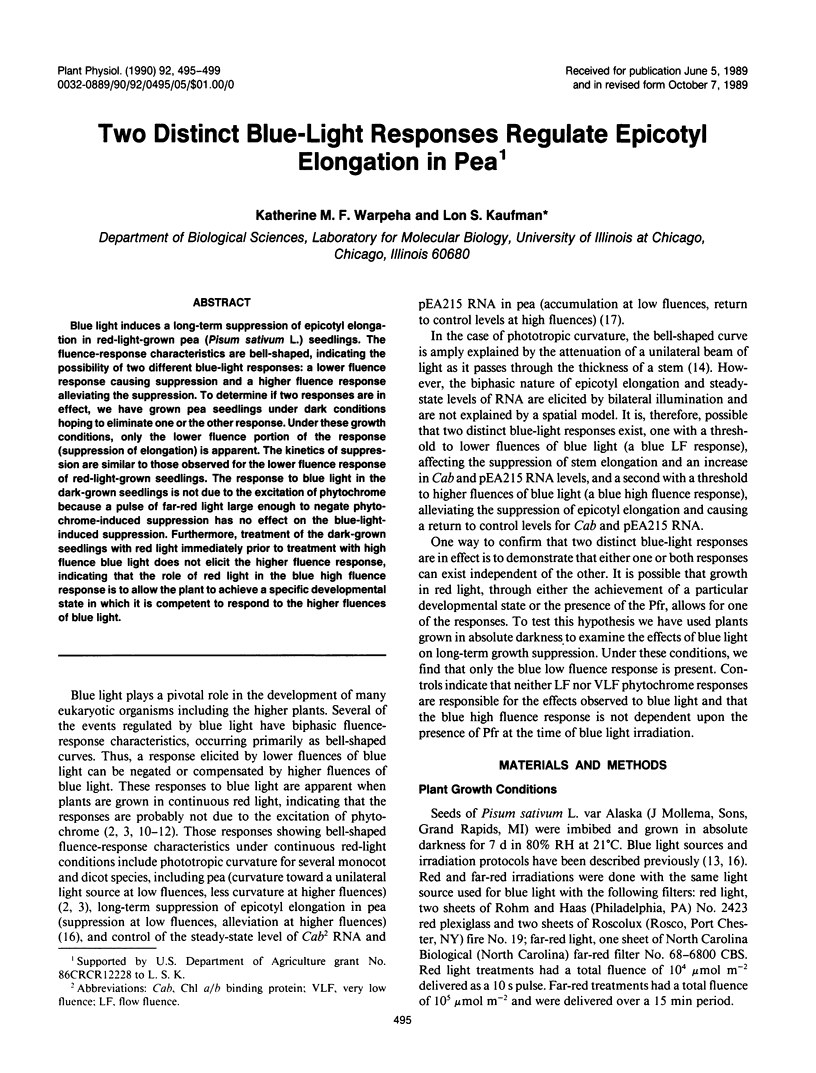
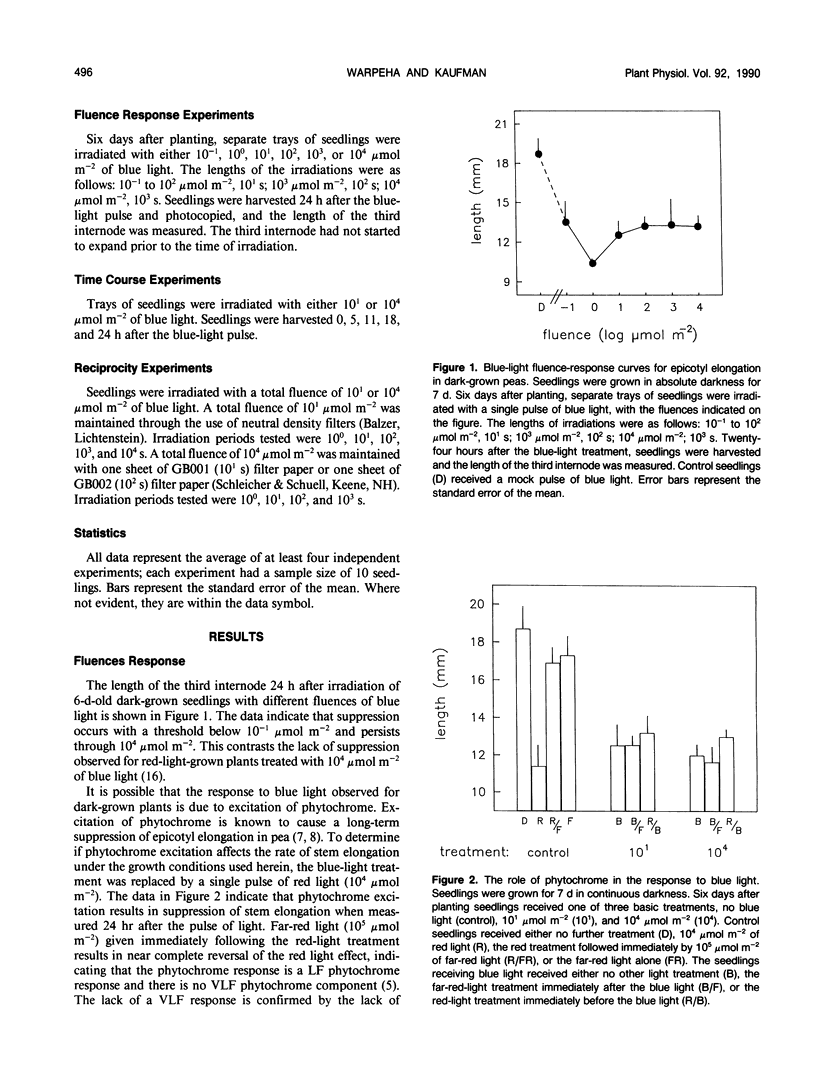
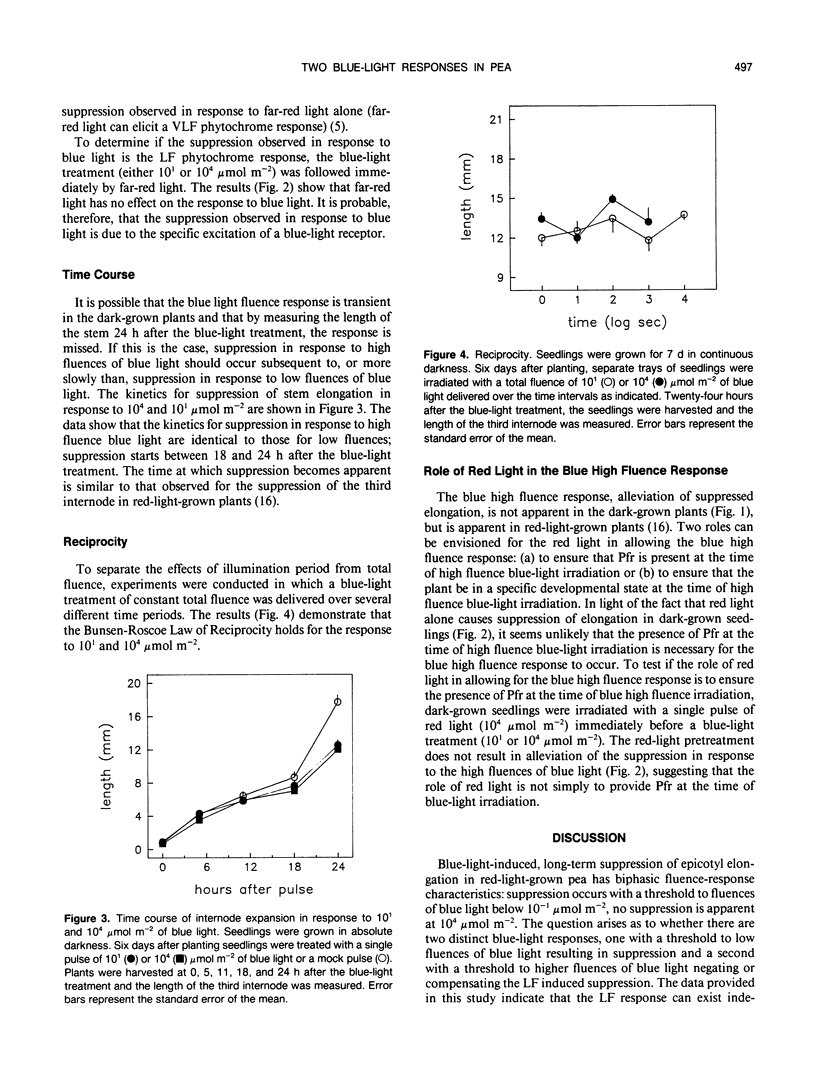
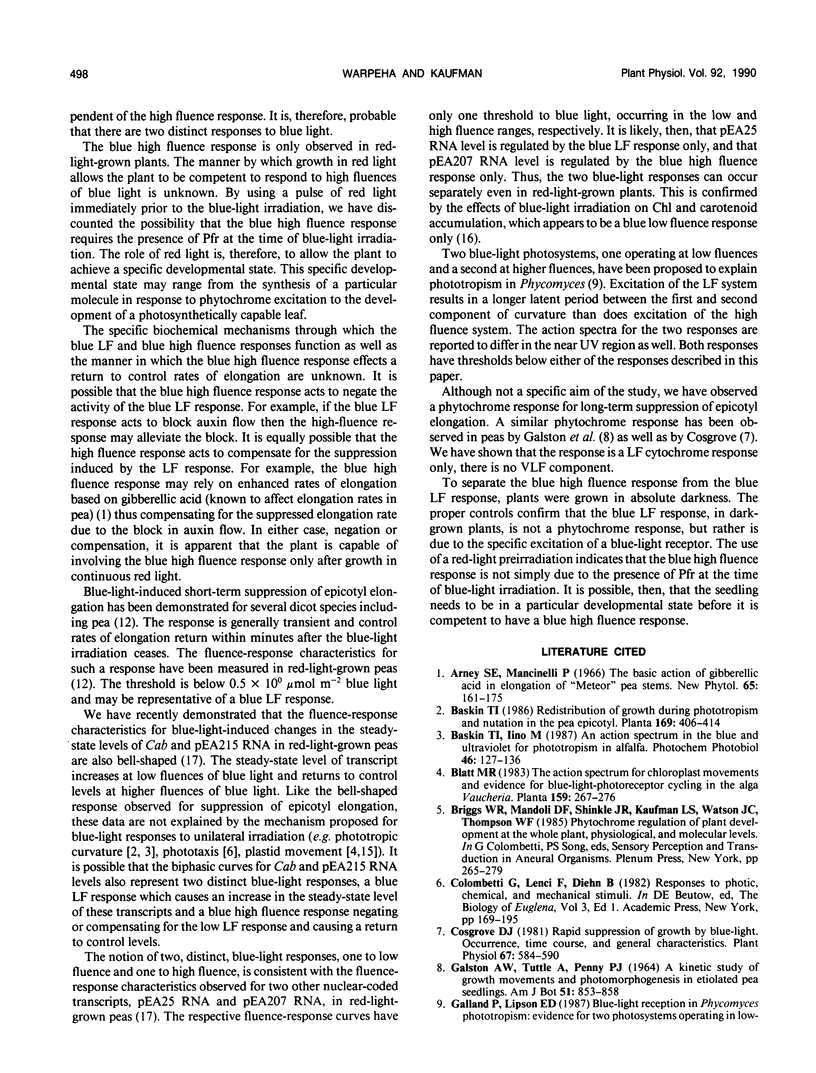
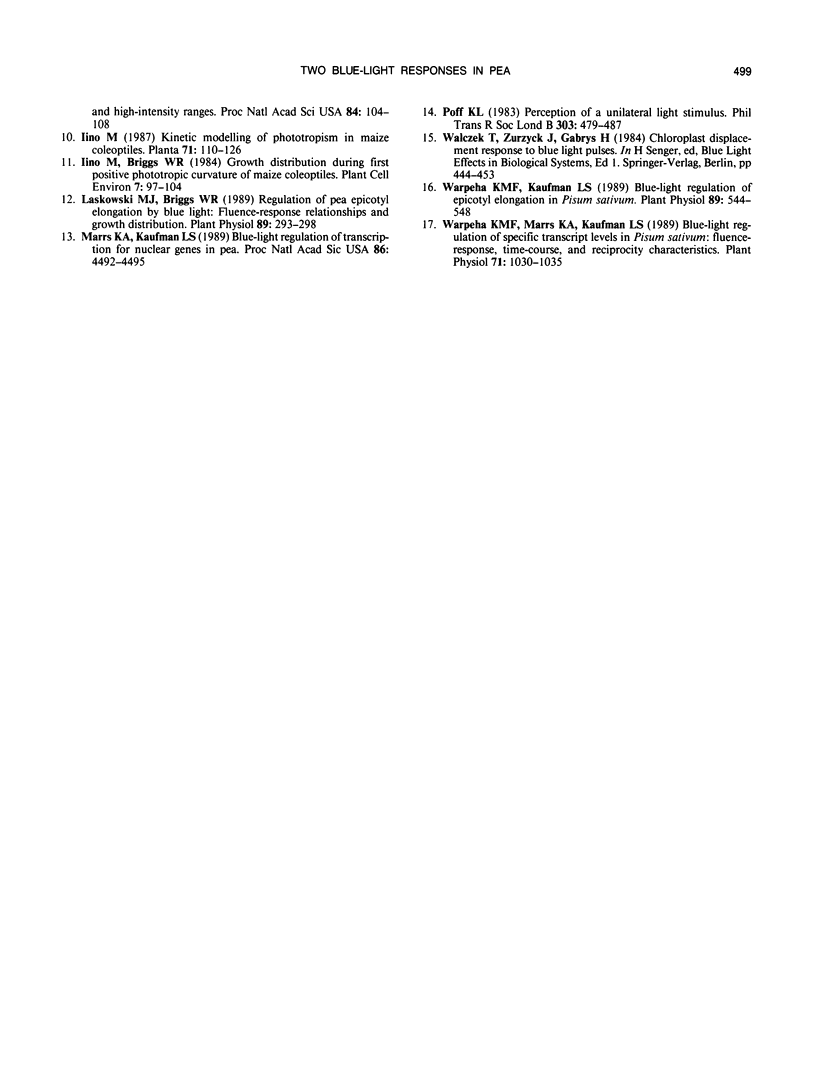
Selected References
These references are in PubMed. This may not be the complete list of references from this article.
- Cosgrove D. J. Rapid Suppression of Growth by Blue Light: OCCURRENCE, TIME COURSE, AND GENERAL CHARACTERISTICS. Plant Physiol. 1981 Mar;67(3):584–590. doi: 10.1104/pp.67.3.584. [DOI] [PMC free article] [PubMed] [Google Scholar]
- Laskowski M. J., Briggs W. R. Regulation of pea epicotyl elongation by blue light : fluence-response relationships and growth distribution. Plant Physiol. 1989 Jan;89(1):293–298. doi: 10.1104/pp.89.1.293. [DOI] [PMC free article] [PubMed] [Google Scholar]
- Marrs K. A., Kaufman L. S. Blue-light regulation of transcription for nuclear genes in pea. Proc Natl Acad Sci U S A. 1989 Jun;86(12):4492–4495. doi: 10.1073/pnas.86.12.4492. [DOI] [PMC free article] [PubMed] [Google Scholar]
- Warpeha K. M., Kaufman L. S. Blue-Light Regulation of Epicotyl Elongation in Pisum sativum. Plant Physiol. 1989 Feb;89(2):544–548. doi: 10.1104/pp.89.2.544. [DOI] [PMC free article] [PubMed] [Google Scholar]
- Warpeha K. M., Marrs K. A., Kaufman L. S. Blue-Light Regulation of Specific Transcript Levels in Pisum sativum: Fluence-Response, Time-Course, and Reciprocity Characteristics. Plant Physiol. 1989 Nov;91(3):1030–1035. doi: 10.1104/pp.91.3.1030. [DOI] [PMC free article] [PubMed] [Google Scholar]


